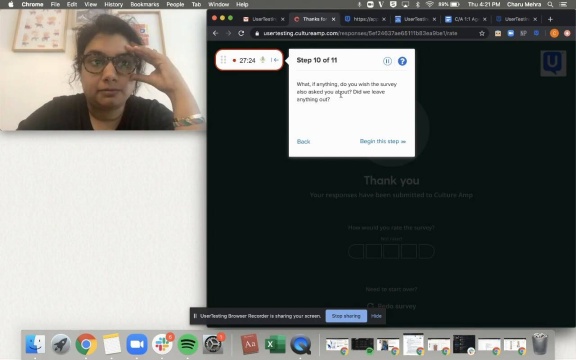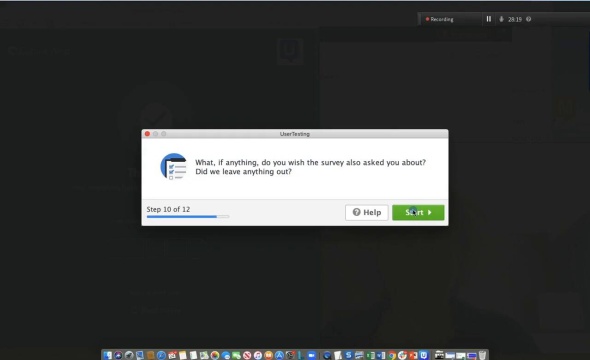
4 pitfalls of employee surveys you can test and avoid with feedback

If you work in human resources (HR) you’re probably familiar with employee surveys. There seems to be one for everything—engagement, benefits, diversity and inclusion, the list goes on. Employee surveys are a great way to measure sentiments and understand how employees are responding to programs, but even with the most straightforward questionnaire, there’s a lot more that goes into making effective employee surveys than meets the eye. If you want to get the data you need to support your employees, it’s important that you consider their perspectives before launching the survey.
An effective way for including your employees in the survey development process is to conduct a dry run of your survey with some of them. Doing this will help you extract the level of insight needed for you to deliver a survey that gathers the appropriate data.
In this post, we’ll share four pitfalls of employee surveys that you can gather feedback on (and avoid) when building employee surveys at your business. These insights were garnered from testing our own surveys via the UserTesting Human Insight Platform.
1. Poorly phrased questions
As people, especially in HR, we value feelings and understand that certain words or phrases can invoke certain responses. This is especially important to remember when building employee surveys. Constructing effective questions is a crucial step in learning how to conduct surveys. Like in engineering and marketing, or any other discipline, HR professionals use certain terminology that could seem like jargon to those outside of the practice. Jargon can impair clarity, isolate people, and ultimately create an experience that's seemingly not for the intended audience.

To avoid jargon and other unclear language, ask a small group of employees to take the survey as they normally would, sharing their feedback aloud as they work through the survey. Before you launch your survey company-wide, this activity will allow you to hear what’s working, confusing, or generally just not being received how you may have expected.
Collecting this insight is critical so that you can rephrase when necessary to not only speak the language of your audience but to also get your questions answered as accurately as possible.
2. Disorganized and unrelated flow
Jumping from one question about how employees feel about management to another question about diversity and inclusion practices can be jarring for an employee taking the survey. A survey questionnaire, like a conversation, should be grouped by topic and unfold in a logical order so as to be sure employees answer similar questions at once—which often provides more accurate responses.
By grouping similar questions into sections, you’re not only ensuring that employees are able to concentrate on like-questions but confirming consistency when answering them, as well. You’ll also want to secure that the flow of the grouped questions makes sense. We found that starting with bigger, macro-level questions about the company and then narrowing the focus as you go works well for employee engagement surveys.
3. Length of survey
When you have a captive audience with a survey, it’s easy to get carried away and include more questions than necessary. Since HR teams usually get one shot per year for most surveys, it’s natural to try to squeeze in as much as possible. However, when an employee opens an engagement survey and finds out that they have to answer over 40 questions about their experience, they’re often less than thrilled. Even worse, long surveys can bring on fatigue resulting in less meaningful data to infer from.

Even if you succeed in grouping questions logically, the sheer volume of questions can be overwhelming and affect the consistency of their responses.
4. Never asking what really matters to an employee
After you've collected feedback on the survey itself, ask if there was anything missing or something they wished they were asked about. This should be open-ended, providing the space to include any final thoughts from your employees.
With HR often being perceived as “in the weeds” and with survey creation not being a normal part of the HR pedigree, getting this feedback is a great way to be empathetic and better understand what employees think is important.

Get an actionable pulse from your employee surveys
As an HR professional, you know that your organization’s success starts and ends with it’s employees. From overall engagement and motivation to career development or benefits, employee surveys are a great way to find how they really feel about their job and company.
Nevertheless, if you’re not asking the right questions at the right time, there’s a good chance you’ll miss something important. Before you launch your next survey with your employees, consider these common pitfalls that you can test for and avoid.


